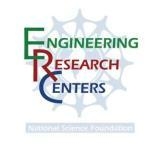UPITT McGowan Institute for Regenerative Institute Regenerative Medicine, Biomaterials, Metallurgy, and Nano- and Sensor Technology Focus of Multi-University Collaborative Effort

The ERC will focus primarily on producing three technologies:
- Biodegradable and self-adapting devices and smart constructs for craniofacial and orthopedic reconstructive procedures;
- Similarly behaving cardiovascular devices such as stents; and
- Miniaturized sensing systems that monitor and control the safety and effectiveness of biodegradable metals inside the body (a technology that could lead to responsive biosensors that could help doctors determine when and where diseases occur in the body).
Contributing McGowan faculty include:
- Harvey Borovetz, PhD, deputy director, McGowan Institute Artificial Organs and Medical Devices; chair, bioengineering department
- Xinyan Tracy Cui, PhD, assistant professor, department of bioengineering
- Prashant Kumta, PhD, Edward R. Weidlein chair, Swanson School of Engineering; professor, departments of bioengineering, chemical and petroleum engineering, and mechanical engineering and materials science
- Kacey Marra, PhD, assistant professor, department of surgery; director, Plastic Surgery Laboratory; co-director, The Adipose Stem Cell Center, division of plastic surgery, school of medicine
- Charles Sfeir, DDS, PhD, associate professor, department of oral medicine and pathology
- William Wagner, PhD, McGowan Institute deputy director; professor of surgery, bioengineering, and chemical engineering; director of Thrombosis Research for the Artificial Heart and Lung Program; deputy director, ERC
- Savio Woo, PhD, DSc, university professor, bioengineering department; founder and director of the Musculoskeletal Research Center.
As part of this research effort, dozens of engineers and doctors from universities and industries around the world will collaborate on the project announced September 4, 2008, to develop implantable devices made from biodegradable metals. The devices will be designed to adapt to physical changes in a patient's body and dissolve once they have healed. Naturally dissolving plates, screws, stents, and other devices would reduce the follow-up surgeries and potential complications of major orthopedic, craniofacial, and cardiovascular proceduresýsparing millions of patients worldwide added pain and medical expenses.
NCAT, the first Historically Black College and University (HCBU) to receive an NSF ERC, will lead the partnership research program. Serving as ERC director is Jagannathan Sankar, NCAT's Distinguished University Professor of mechanical engineering and director of the Center for Advanced Materials and Smart Structures. Along with Dr. Wagner, UC professor Mark Schulz, co-director of the UC Nanoworld and Smart Materials and Devices Laboratories, will serve as the ERC deputy directors.
To coincide with the grant project, NCAT will establish the first bioengineering department at an HCBU with the assistance of faculty members in the Department of Bioengineering in Pitt's Swanson School of Engineering, MIRM, and at UC. The department will offer bachelor's, master's, and PhD degrees. An educational component will translate the ERC's research into a curriculum for aspiring engineers, including those at numerous high schools and community colleges across the United States and at universities primarily attended by groups underrepresented in engineering.
"This ERC is a true interdisciplinary effort to vastly improve many patientsý quality-of-life and to help educate the next generation of bioengineering and nanotechnology researchers," Dr. Sankar said. "We hope to expand the presence of African-Americans, women, and socially and economically disadvantaged students in bioengineering and nanotechnology. This project seeks to provide pre-college and college students with the technical education in advanced processing and materials relevant to 21st century careers. Ultimately, we want to help foster economic development through innovation to radically change the way diseases are treated and to place the U.S. health care system in a strong position."
The biodegradable devices and smart structures are intended to reduce complications and spare patients with conditions ranging from cleft palate and bone fractures to coronary heart disease from undergoing multiple surgeries. For instance, children born with a cleft palate are fitted with hard metal devices that must be removed and refitted over time. Devices the ERC researchers will explore - crafted from magnesium alloys and other biodegradable metals - would adapt to the body without refitting. Plus, magnesium alloys can dissolve after their work is done with no clinical side effects, a feature also beneficial in the cardiovascular realm. Magnesium stents and other supports would restore cardiovascular function without needing to later remove the device and without exposing the patient to the potential complications of leaving devices inside the body.
"The treatment of diseased and traumatized tissues is evolving as medical technologies increasingly harness the body's regenerative powers," Dr. Wagner said. "This ERC will extend this approach by combining the mechanical attributes of metals with biologically active agents that together will further encourage the natural healing process."
The ERC combines the strengths of the project's three primary universities:
- NCAT's recognized expertise in metallurgy, based in its College of Engineering;
- Pittýs strength in biomaterials and regenerative medicine stemming from the work conducted in the Swanson School of Engineeringýs Departments of Bioengineering, Chemical Engineering, and Mechanical Engineering and Material Sciences, the McGowan Institute, and the School of Dental Medicine; and
- UCýs research in nano- and sensor technology based in its interdepartmental Nanoworld and Smart Materials and Devices Laboratories.
"Furthermore, this consortium has deep roots in the shared belief of offering the best educational opportunities and best resources available to our students," said Carlo Montemagno, dean of UC's College of Engineering. "It is a central trust placed upon public universities to not only develop new technologies but also to help our students in launching new careers in engineering, science, and medicine."
Other partners include Germany's Hannover Medical School for support in medical implantology. The Indian Institute of Technology in Madras, India, will provide a global prospective on the research and application of nano- and biomaterials. California State University at Los Angeles, a designated Hispanic Serving Institution, will conduct bioscience research to help engage underrepresented students.
Nearly 30 product development and industrial partners in the nano- and biotechnology market will form a consortium with the ERC to provide input for the direction of research and to help transfer the ERC technology to patients.

